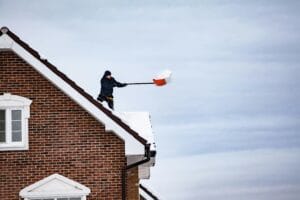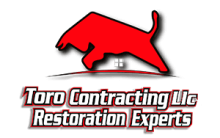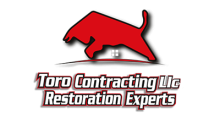Imagine waking up to a thunderstorm roaring outside, followed by bright sunshine melting the snowfall from the night before. If you’ve lived in Maryland long enough, this isn’t an unusual scenario. The state’s weather is famously unpredictable, one day you’re battling heavy rain, the next you’re shoveling snow, and sometimes you face scorching summer heat. When it comes to protecting your home, having durable roofing is not just a preference; it’s a necessity.
Durable roofing in Maryland is more than just a buzzword. It’s about selecting the right materials and designs that withstand the state’s unique climatic challenges. Whether it’s resisting ice dams during winter or enduring the humidity and summer storms, your roof needs to be up to the task. But how do you choose the best option? What roofing materials provide the longevity and toughness Maryland homeowners require?
In this article, you will discover the top durable roofing options tailored for Maryland’s ever-changing weather conditions. We’ll break down the pros and cons of popular roofing materials such as asphalt shingles, metal roofing, slate, and synthetic alternatives. You’ll learn which roofs offer the best resistance against moisture, wind, and temperature fluctuations, helping you make an informed decision to protect your investment.
Moreover, we’ll share practical tips on maintenance strategies that maximize your roof’s lifespan in Maryland’s climate. Understanding how to care for your durable roofing will save you costly repairs and keep your home safe through the seasons. From specialized installation techniques to seasonal inspections, find out what every homeowner should know.
By the end of this read, you’ll be equipped with the knowledge to select a roofing solution that not only endures the Maryland weather rollercoaster but also enhances your home’s curb appeal and energy efficiency. Don’t let your roof be the weak link when storms roll in, discover how durable roofing can fortify your home against Maryland’s ever-shifting weather, season after season.
Key Takeaways
- Durable roofing is essential for Maryland homes due to the state’s extreme and unpredictable weather — from heavy rain and snow to high humidity and heat.
- Material selection is key: metal, slate, and architectural asphalt shingles offer superior resistance to wind, moisture, and temperature fluctuations.
- Metal roofing reflects heat, resists cracking, and sheds snow efficiently, while slate offers unmatched longevity and fire resistance, and asphalt shingles balance flexibility and cost-effectiveness.
- Maryland’s seasonal climate variations test every roof — durable roofing must handle thermal expansion, freezing rain, and strong winds without structural compromise.
- Proper design and installation (ventilation, slope, flashing, and drainage) are just as vital as material choice for ensuring long-term performance.
- Energy efficiency is a major advantage: reflective or insulated durable roofs lower cooling costs during Maryland’s hot, humid summers.
- Sustainability and longevity go hand in hand — durable roofs reduce waste, require fewer replacements, and often use recyclable materials.
- Investing in durable roofing not only safeguards your home’s structure and value but also enhances curb appeal, efficiency, and peace of mind through every Maryland season.
Why Durable Roofing Is More Important Than You Think for Maryland Homes
When you hear the term durable roofing, what comes to mind? For many homeowners in Maryland, it means much more than just a roof over their heads, it’s a critical shield protecting their homes from the state’s notoriously unpredictable weather. Maryland’s climate swings dramatically throughout the year, swinging from scorching summers to icy winters, not to mention frequent rainstorms and occasional hurricanes. In this environment, investing in durable roofing isn’t just a smart choice, it’s essential.
What Exactly Is Durable Roofing?
Durable roofing refers to roofing systems designed with materials and construction techniques that can withstand harsh weather conditions and last for many years with minimal maintenance. Instead of needing frequent repairs or replacements, durable roofing options provide long-term protection, energy efficiency, and peace of mind for homeowners.
The Stakes Are High in Maryland
Why is durable roofing especially crucial in Maryland? According to the National Weather Service, the state experiences around 35 to 50 inches of rainfall annually, alongside temperature fluctuations that can range from below freezing in winter to highs above 90°F in summer. The combination of moisture, heat, and occasional severe storms places enormous stress on traditional roofing materials, often leading to leaks, structural damage, or accelerated wear and tear.
Statistics from the Maryland Department of the Environment underline the urgency: approximately 20% of roof failures statewide are linked directly to weather-related damage. This means that nearly one in five roofing problems could be avoided with more durable solutions.
The Benefits of Durable Roofing
- Longevity and Cost Efficiency: While durable roofing materials like metal, slate, or high-quality composite shingles might come with a higher upfront price, their lifespan often exceeds 50 years. This longevity ultimately saves Maryland homeowners money on repairs and replacements.
- Weather Resistance: Durable roofing materials resist damage from wind, hail, snow, and rain far better than standard options, minimizing the risk of leaks and water infiltration.
- Energy Efficiency: Certain durable roofing systems incorporate reflective coatings or insulation properties that help regulate indoor temperatures, reducing energy bills during hot Maryland summers.
- Environmental Sustainability: Many durable roofing materials are recyclable or eco-friendly, helping homeowners reduce their carbon footprint.
A Real Maryland Success Story
Take the case of the Harris family in Frederick, Maryland. After years of struggling with recurring roof leaks and repair bills following heavy storms, they decided to invest in a durable metal roofing system. Despite the initial higher cost, the Harris family noticed immediate improvements: their energy bills decreased by 15%, and their new roof withstood a severe windstorm without any damage. More than three years later, their durable roofing continues to protect their home flawlessly, proving that investing in durability pays off.
In summary, durable roofing is not just about shelter, it’s about smart protection tailored to Maryland’s variable climate. By choosing materials and solutions that stand the test of time and weather, homeowners can safeguard their investment and enjoy peace of mind regardless of what nature throws their way.
Tips for Choosing Durable Roofing Options for Maryland’s Ever-Changing Weather:
✅ Opt for Impact-Resistant Materials: Maryland can experience hail and strong winds, so selecting roofing materials rated for impact resistance, like metal or architectural asphalt shingles, helps protect your home.
❄️ Consider Weather-Resilient Shingles: Look for shingles designed to withstand temperature extremes, ice dams, and heavy rain common in Maryland’s climate.
💨 Prioritize Proper Ventilation: Good roof ventilation prevents moisture buildup and extends the lifespan of your durable roofing, especially with humid summers and cold winters.
🛠️ Regularly Inspect and Maintain: Schedule roof inspections before and after storm seasons to catch damage early and maintain durability against Maryland’s unpredictable weather.
🌧️ Install Efficient Water Drainage: Ensure gutters and downspouts are sized and positioned to handle heavy rainfall and prevent water damage to your roof structure.
♻️ Choose Sustainable and Energy-Efficient Options: Durable roofing materials like cool roofs reduce heat absorption, saving energy during hot Maryland summers and providing added longevity.
🏡 Hire Experienced Local Contractors: Professionals familiar with Maryland’s climate can recommend the best durable roofing materials and installation techniques for long-lasting protection.
🔧 Use Proper Flashing and Sealing: Effective flashing around vents and chimneys prevents leaks during heavy rains and snow melts, maintaining the durability of your roof.
By following these tips, you’ll choose the best durable roofing solutions to protect your Maryland home through every season.

Key Concepts
When exploring durable roofing, especially within the dynamic climate of Maryland, it becomes evident that roofing is more than just a protective layer atop a building; it is a silent shield that battles the elements daily, enduring the relentless push and pull of weather’s many moods. To truly grasp what makes a roofing system durable, we must unpack the characteristics, materials, and environmental interactions that define longevity and resilience.
The Essence of Durability in Roofing
Durability, in the context of roofing, is akin to the soul of a fortress, it represents endurance against time, stress, and nature. Durable roofing doesn’t merely withstand an occasional storm but consistently resists harsh cycles of heat, moisture, wind, and cold that Maryland’s weather frequently unleashes. Imagine a tree that bends slightly in the wind but does not break; similarly, durable roofs need flexibility coupled with strength, surviving extremes without structural failure.
Material Resilience: The Heartbeat of Roofing Longevity
Within durable roofing, material choice is the core determinant of performance. Materials such as metal, slate, or architectural asphalt shingles each bring different survival strategies to the table:
– Metal Roofing: Comparable to a knight’s armor, metal roofs offer an unmatched combination of toughness and flexibility. Their metallic composition allows them to reflect heat, resist cracking, and shed snow, qualities essential in Maryland’s variable climate.
– Slate Roofing: This is the roofing equivalent of timeless stone monuments. Slate’s natural hardness and density provide resistance to abrasion and fire, symbolizing endurance that can span centuries under the right conditions.
– Architectural Asphalt Shingles: These shingles act like a multi-layered shield, combining fiberglass reinforcements with sturdy asphalt to provide robustness, impact resistance, and a measure of flexibility to resist temperature shifts.
This variety of materials showcases roofing’s adaptive nature, much like a chameleon adjusting to its environment yet maintaining its core identity.
The Environmental Context: Maryland’s Weather as a Testing Ground
Maryland’s weather is an orchestra of seasonal extremes. Summers bring intense heat and humidity; winters often deliver freezing temperatures and ice; spring and fall oscillate between heavy rains and gusty winds. Each season plays a unique role in testing roofing durability.
Consider the thermal expansion and contraction cycles a roof undergoes, like the rhythmic breathing of a living organism reacting to its environment. An ideal durable roof accommodates this movement without cracking or loosening. Additionally, the persistent humidity and occasional freezing rain present challenges similar to salt slowly corroding a metal surface. Roofs must have barrier properties to combat moisture penetration, preventing damage to internal structures.
Architectural Integration and Design Philosophy
Durability extends from material strength into thoughtful design. Roofs act like a sculpted landscape crafted not only for beauty but to channel water efficiently, resist wind uplift, and reduce ice dam formation. Eaves, slopes, ventilation, and flashing details serve as functional elements working in concert, like the gears of a finely tuned clock ensuring longevity.
A durable roof is thus not a standalone component but a system. This holistic view deepens our understanding: the relationship between design and material dictates performance outcomes over time.
Aging Gracefully: The Patina of Time
Durability implies survival, but it can also suggest a graceful aging process. Some roofing materials develop a patina, like an ancient bronze statue, which adds character while continuing to fend off weather impacts. This aging is a silent narrative of endurance, where visible wear does not equate to functional failure but rather narrates decades of weather-worn stories.
Such a perspective challenges the notion that roofing durability is measured solely by how “new” a roof looks but rather how effectively it continues its sheltering role over time.
The Invisible Battle: Maintenance’s Role in Durability
Though this discussion steers away from maintenance tips, it is vital to recognize the invisible battles a durable roof faces beneath the surface. Durable roofing options inherently provide resistance to degradation and damage; however, these materials still must withstand biological growth such as moss or algae, UV radiation wear, and mechanical stress from wind-driven debris.
Durability therefore is a testament to a roof’s ability to fend off these undercurrents of decay without succumbing prematurely.
The Symbiosis Between Durability and Sustainability
In the broader narrative, durable roofing intersects with sustainability, forging a path where longevity directly reduces environmental impact. A resilient roof cuts down the frequency of replacements, lowering waste and conserving resources. Maryland’s fluctuating weather thus places durable roofing at the confluence of practicality and environmental stewardship.
Durable roofing is, ultimately, a complex symphony of material science, environmental adaptation, architectural insight, and time-tested resilience. For Maryland homes, these factors combine uniquely, transforming a roof from a mere covering into a dynamic guardian against nature’s ever-changing moods. Understanding these foundational concepts enriches our appreciation of what durable roofing truly represents: a steadfast protector woven into the fabric of daily life, weathering storms both literal and symbolic with quiet strength.
Frequently Asked Questions
❓ What makes a roofing material durable for Maryland’s weather?
Durable roofing materials for Maryland are those that can withstand the state’s diverse climate, including heavy rain, snow, heat, and wind. They are designed to resist water infiltration, thermal expansion, and impact damage, ensuring long-lasting protection against the ever-changing weather.
❓ Which roofing materials are best suited for Maryland’s climate?
Materials like architectural asphalt shingles, metal roofing, slate, and synthetic composite shingles are excellent choices. They offer high resistance to moisture, wind, and temperature fluctuations common in Maryland, providing durability and extended lifespan.
❓ How often should a durable roof be inspected in Maryland?
It’s recommended to have your roof inspected at least twice a year, ideally in spring and fall, to identify any weather-related damage early. Inspections after severe storms are also crucial to maintain the roof’s durability and performance.
❓ Can durable roofing save money on energy bills in Maryland?
Yes, many durable roofing options come with reflective coatings or insulation benefits that improve energy efficiency. This can lower heating and cooling costs by regulating indoor temperatures despite Maryland’s seasonal extremes.
❓ Is it worth investing in a more expensive durable roofing option?
Absolutely. While the upfront cost may be higher, durable roofing materials typically require less maintenance, have longer warranties, and protect your home better against Maryland’s unpredictable weather. This investment often leads to cost savings over time and increased home value.






